Ditapis dengan
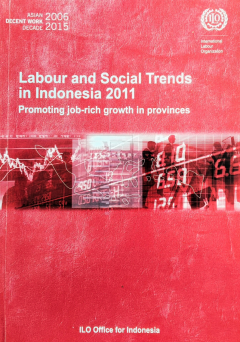
Labour and Social Trends in Indonesia 2011 ; Promoting job-rich growth in pro…
This report focuses on job-rich growth at the province level. The underlying theme of this report “promoting job-rich growth in provinces” is derived from a guiding policy principle of the current Government, “pro-employment and pro-poor” growth.
- Edisi
- 1
- ISBN/ISSN
- 9789220261576
- Deskripsi Fisik
- vi, 116 halaman ; 30 cm
- Judul Seri
- Textbook
- No. Panggil
- 354.9211 INT l
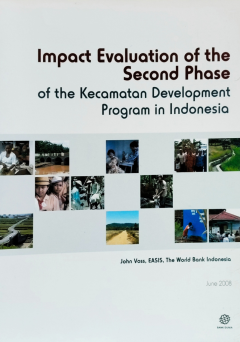
Impact Evaluation of the Second Phase of the Kecamatan Development Program in…
Increasingly, Indonesian communities have been able to determine their own local development priorities as the Government of Indonesia and donors implement programs using the community driven development (CDD) approach. One example of this is the Kecamatan Development Program (KDP), a Government of Indonesia program aimed at alleviating poverty, strengthening local government and community inst…
- Edisi
- 1
- ISBN/ISSN
- -
- Deskripsi Fisik
- vii, 42 halaman ; 28 cm
- Judul Seri
- Textbook
- No. Panggil
- 352.1709598 VOS i
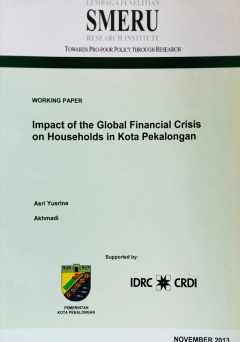
Impact of the Global Financial Crisis on Households in Kota Pekalongan
This study adds to the studies about the impact of the 2008 Global Financial Crisis (GFC) on Indonesia’s economy both at the macro- and microeconomic levels. Kota (City of) Pekalongan was chosen because of the facts that the city is a Community-Based Monitoring System (CBMS) area in Indonesia and that there is household-level data available in the city.
- Edisi
- 1
- ISBN/ISSN
- 9786027901049
- Deskripsi Fisik
- iv, 32 halaman ; 30 cm
- Judul Seri
- Textbook
- No. Panggil
- 368.409598 ASR i
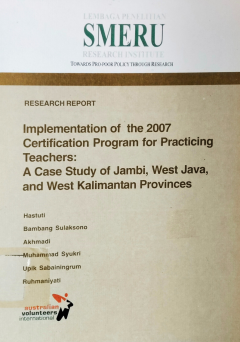
Implementation Of The 2007 Certification Program for Practicing Teachers: A C…
The teacher certification program for practicing teachers has been implemented since 2007 as an effort to set standards and increase the quality of teachers. Teacher certification was carried out through portfolio assessments for civil servant and non-civil servant teachers with a minimal educational background of an undergraduate degree or four-year diploma, who teach in preschools, primary sc…
- Edisi
- 1
- ISBN/ISSN
- -
- Deskripsi Fisik
- xiv, 61 halaman ; 29 cm
- Judul Seri
- Textbook
- No. Panggil
- 352.1409598 HAS i

Indeks Kesejahteraan Rakyat
Indikator Kesejahteraan Rakyat 2022 merupakan publikasi tahunan Badan Pusat Statistik (BPS) yang menyajikan tingkat perkembangan kesejahteraan rakyat Indonesia antarwaktu dan perbandingannya antar provinsi maupun daerah tempat tinggal (perkotaan dan perdesaan). Untuk memudahkan interpretasi, perubahan taraf kesejahteraan dikaji menurut delapan bidang yang mencakup Kependudukan, Kesehatan dan Gi…
- Edisi
- 1
- ISBN/ISSN
- -
- Deskripsi Fisik
- vii, 106 halaman ; 20 cm
- Judul Seri
- Textbook
- No. Panggil
- 353.5 KEM i
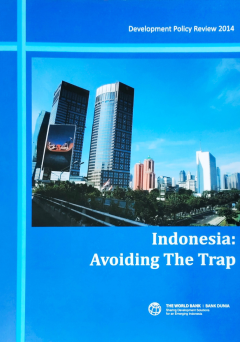
Indonesia : Avoiding The Trap
Within the next two decades Indonesia aspires to generate prosperity, avoid a middle-income trap and leave no one behind as it tries to catch up with high-income economies. These are ambitious goals. Realizing them requires sustained high growth and job creation, as well as reduced inequality. Can Indonesia achieve them? This report argues that the country has the potential to rise and become m…
- Edisi
- 1
- ISBN/ISSN
- -
- Deskripsi Fisik
- vi, 157 halaman ; 28 cm
- Judul Seri
- Textbook
- No. Panggil
- 354.6409598 THE i
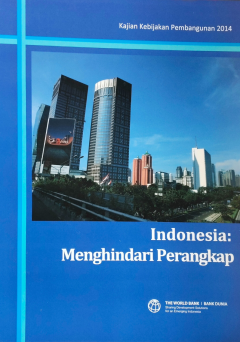
Indonesia : Menghindari Perangkap
Dalam dua dekade ke depan Indonesia bersiap untuk meningkatkan kesejahteraan, menghindari diri dari perangkap zona negara berpenghasilan menengah, dan bertekad untuk tak meninggalkan siapapun dalam upayanya mengejar negara-negara berpenghasilan tinggi. Semua ini adalah citacita yang ambisius. Untuk mencapainya, dibutuhkan pertumbuhan dan penciptaan lapangan kerja yang tinggi dan berkelanjutan, …
- Edisi
- 1
- ISBN/ISSN
- -
- Deskripsi Fisik
- vi, 173 halaman ; 28 cm
- Judul Seri
- Textbook
- No. Panggil
- 354.6409598 THE i

Indonesia's PNPM Generasi Program : Final Impact Evaluation Report
Indonesia has made remarkable strides in key human development indicators over the past few decades. Primary school enrollment is close to universal for both boys and girls, and the child mortality rate has declined rapidly. Nevertheless, infant mortality, child malnutrition, maternal mortality, junior secondary school enrollment, and educational learning quality have all remained problematic i…
- Edisi
- 1
- ISBN/ISSN
- -
- Deskripsi Fisik
- vii, 156 halama ; 28 cm
- Judul Seri
- Textbook
- No. Panggil
- 353.5 OLK i

Integritas Sektor Publik Indonesia Tahun 2012 : Fakta Korupsi dalam Layanan P…
Lembaga pemerintah, baik Kementrian, non kementrian, maupun pemerintah daerah, termasuk di dalamnya Badan Usaha Milik Negara (BUMN) dan Badan Usaha Milik Daerah (BUMD), merupakan lembaga sektor publik yang bertugas mengemban amanat rakyat.
- Edisi
- 1
- ISBN/ISSN
- 9786021723135
- Deskripsi Fisik
- viii, 186 halaman ; 29 cm
- Judul Seri
- Textbook
- No. Panggil
- 364.1323 KOM i
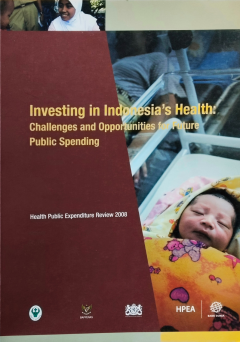
Investing in Indonesia's health challenges and opportunities for future publi…
Indonesia's health sector is entering a period of transition. By 2015, Indonesia is expected to have a population of around 250 million. In addition to this major demographic change, epidemiological and nutritional transitions are also occurring. Taken together, all these changes will require a very different Indonesian health system from the one that exists today.
- Edisi
- 1
- ISBN/ISSN
- -
- Deskripsi Fisik
- xii, 140 halaman : 30 cm
- Judul Seri
- Textbook
- No. Panggil
- 362.12 THE i
 Karya Umum
Karya Umum  Filsafat
Filsafat  Agama
Agama  Ilmu-ilmu Sosial
Ilmu-ilmu Sosial  Bahasa
Bahasa  Ilmu-ilmu Murni
Ilmu-ilmu Murni  Ilmu-ilmu Terapan
Ilmu-ilmu Terapan  Kesenian, Hiburan, dan Olahraga
Kesenian, Hiburan, dan Olahraga  Kesusastraan
Kesusastraan  Geografi dan Sejarah
Geografi dan Sejarah